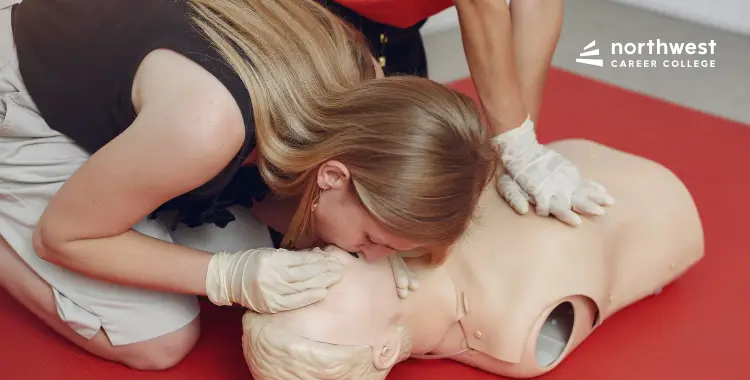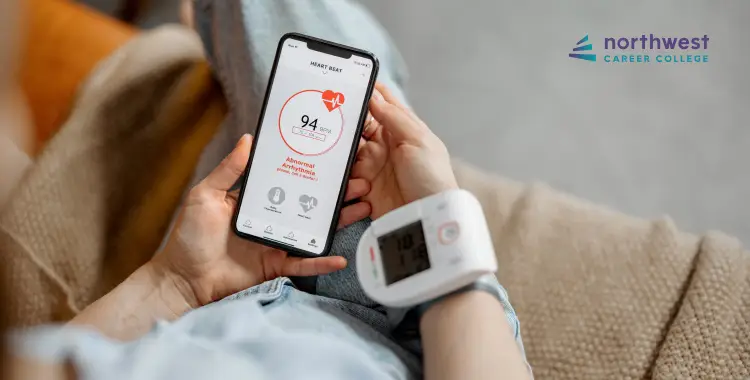The Difference Between Basic Life Support and CPR Training
- November 14, 2025
- 1.7k views
- 4 min read
In a medical emergency, the capability to act can mean the difference between life and death. However, with many different training programs available, most people are uncertain whether to pursue Basic Life Support (BLS) or CPR training.
While both BLS and CPR teach life-saving techniques, they are different. Understanding the difference will help you choose the proper training—whether you’re a medical professional or a regular individual who wants to be prepared for emergencies.

Table of Contents
What is CPR?
CPR stands for Cardiopulmonary Resuscitation, a method of saving a life if a person’s heart has stopped beating or one is not breathing as a result of an accident, heart attack, drowning, or other grave medical conditions.
The purpose of CPR training is to learn how to give chest compressions and rescue breaths to an unconscious person who is not breathing. The goal is to continue blood circulation and provide oxygen to the brain and other vital organs until medical help arrives or until the person begins breathing independently.
Anybody can learn CPR. It is easy to carry out and does not require some medical training. Even if one is not in the medical field, learning how to perform CPR can make a big difference between life and death in cases of an emergency.
CPR is usually taught in introductory courses that cover:
- How to check for signs of life in a person
- How to do compressions at the correct depth and rate
- Rescue breaths-mouth to mouth-on a person who is not breathing
- How to operate an automated external defibrillator in the case of cardiac arrest
The most crucial aspect of CPR is chest compressions, which help maintain blood circulation to the most essential organs in the body, including the brain, until help arrives. CPR can increase a person’s chances of survival if done correctly.
What is BLS?
Essential Life Support (BLS) is entirely different from CPR in that it deals with a higher level of care: where CPR will help an unconscious person who is not breathing, BLS involves other essential steps to support a person’s vital signs in an emergency.
Generally, BLS training targets health professionals or all those who may be expected to give lifesaving assistance in a medical setting, including nurses, doctors, paramedics, and EMTs. Knowledge of BLS will, however, be practical for anyone interested in being fully prepared to act in cases of emergency.
In a BLS course, you learn all the skills of CPR, but you also learn additional techniques such as:
- Assessing Airway, Breathing, and Circulation: Through BLS, one is trained to identify the magnitude of the situation and make the most appropriate decisions regarding managing the patient’s condition.
- How to Use an Automated External Defibrillator: BLS also teaches how to use an AED to restart the heart during cardiac arrest. The AED will provide Verbal Prompts regarding when and how to Deliver Shocks.
- Choking: How to help someone choking BLS will teach you how to move the object out of someone’s airway.
- Management of a more serious emergency: BLS also comprises skills required to manage trauma, severe bleeding, or a person who needs immediate medical attention until professional help arrives.
In other words, whereas CPR generally restricts its training to the specific taught technique, BLS training teaches one how to perform assessments and respond to a variety of life-threatening situations, including how to perform CPR.
Why Is It Important to Learn Both?
Knowing when and how to perform CPR can save a life, but basic CPR won’t be enough in some emergencies. Essential Life Support (BLS) training provides a higher level of care, instructing you in the skills to answer a more excellent range of medical emergencies.
With BLS training, you are instructed on how to assist with choking, trauma, and breathing issues, assuring better care in case of emergencies. It also gives you the confidence to be composed and apply appropriate techniques in emergencies.
Most importantly, BLS training enhances survival rates, making it more possible for patients to sustain life until professional medical help can be provided.
By learning CPR and BLS, you’ll be better prepared to respond quickly and effectively when every second counts.
Conclusion
Both CPR and BLS training save lives in the event of a medical emergency. CPR can be thought of as some basic training that all people should know, while BLS is an advanced set of skills designed for healthcare professionals desiring to take their training to the next level. Being informed about the differences between both will guide you toward the course that best serves your needs.
If you’re ready to get started, enroll now at Northwest Career College and equip yourself with the skills to help during the most critical time for others.




